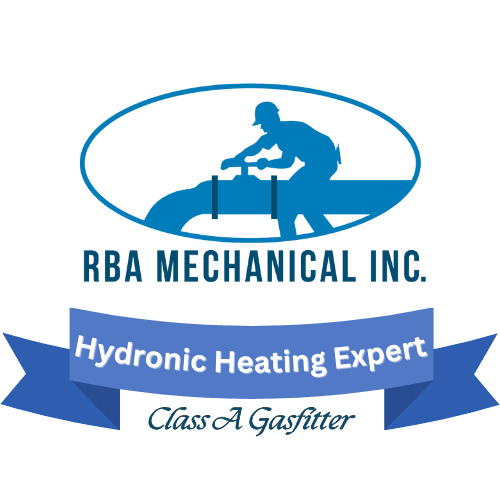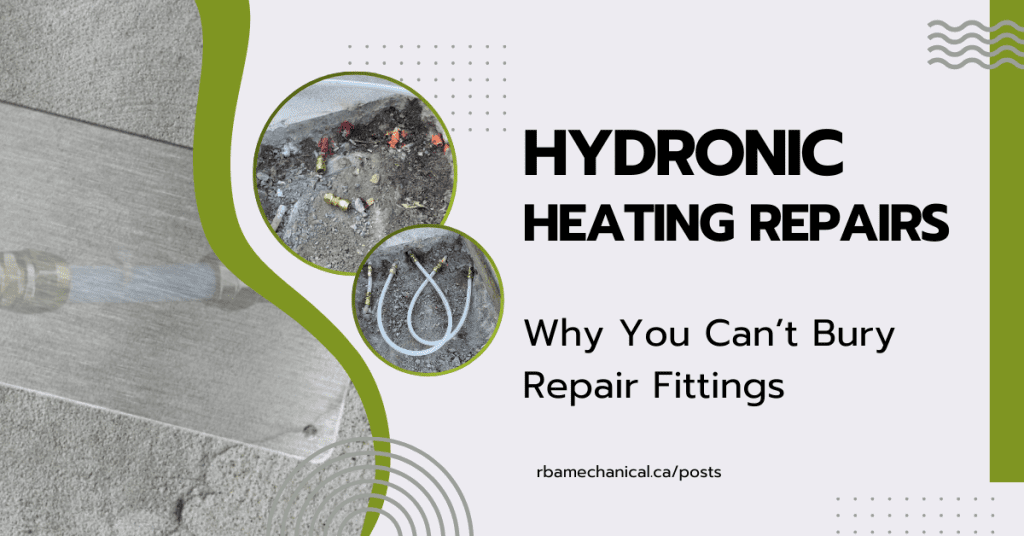Introduction to Hydronic Heating
Understanding hydronic heating repair services requires a basic understanding of hydronic heating systems.
Hydronic heating systems are a popular choice for homeowners and buildings seeking comfort and efficiency in their indoor spaces, and outdoor slabs. Utilizing hot water, these systems offer an effective alternative to traditional heating methods. However, like any mechanical system, they require proper care and attention to maintain peak performance. One of the most critical aspects of hydronic heating is ensuring that repair fittings are installed correctly.
You might think it’s convenient to bury those repair fittings in concrete during installation or renovation projects. After all, out of sight means out of mind, right? But this seemingly simple decision could lead you down a path filled with costly repairs and headaches. Understanding why these components should remain accessible can save you time and money down the road. Let’s dive into the essential factors surrounding hydronic heating repairs and learn how improper installation can have serious consequences.
The Importance of Proper Installation
Proper installation of hydronic heating systems is crucial for their efficiency and longevity. A well-installed system ensures optimal energy use, reducing your utility bills over time.
Every component, from pipes to fittings, must be high quality and correctly placed and secured. This precision prevents leaks that can lead to extensive damage and costly repairs.
Moreover, proper installation impacts comfort levels in your home or building. Inadequate setup can result in uneven heating or cold spots. You want a consistent temperature throughout every room or on every indoor or outdoor concrtete slab.
Ignoring installation guidelines may void warranties too. Manufacturers often require adherence to specific protocols for coverage on parts and labor.
Investing time and resources into expert installation pays off significantly. It not only protects your investment but also enhances the overall performance of your hydronic heating system.
Why Burying Hydronic Heating Repair Fittings in Concrete is a Bad Idea
Burying hydronic heating repair fittings in concrete can lead to significant issues down the line. Once encased, these fittings are nearly impossible to access for maintenance or repairs.
If a leak occurs or a fitting fails, you would need to break through the concrete. This not only causes extra labor and costs but also creates an unnecessary mess.
Concrete does not expand or contract like pipes do; this could further compromise the integrity of your system over time. A hidden problem can quickly escalate into a major headache if left unchecked.
Moreover, moisture trapped within concrete can promote corrosion and damage. This is especially true in older systems where materials may already be fatigued.
Keeping fittings exposed allows for easy monitoring and prompt action when needed, ensuring your hydronic heating system remains efficient and reliable.
Consequences of Improper Installation of Hydronic Heating Repair Fittings
Improper installation of hydronic heating systems can lead to serious issues. When repair fittings are buried in concrete, they become nearly impossible to access. This lack of accessibility complicates any necessary repairs or replacements down the line.
Leaks may go undetected for long periods, causing water damage and mold growth. These problems not only affect your heating system but also compromise your home or building’s structural integrity.
Inefficient heat distribution is another consequence. If fittings aren’t properly installed, hot water won’t circulate effectively, leading to uneven temperatures throughout your space.
Higher energy bills are often a result too. Systems that struggle due to improper setup use more energy trying to maintain comfort levels. These consequences create additional costs and headaches that could have been easily avoided with proper care during installation.
Alternative Solutions
When it comes to hydronic heating repairs, there are effective alternatives to burying fittings in concrete. One option is using accessible service panels. These allow for easy access to repair points without compromising structural integrity.
If you’re concerned about aesthetics, you can always cover exposed components with decorative elements that blend seamlessly into your space while still keeping them accessible.
Consult a professional experienced in hydronic heating installations, such as RBA Mechanical. They have valuable insights on best practices tailored specifically for your home or building’s layout and needs.
Conclusion
Hydronic heating systems offer efficient and effective ways to heat your home or building. However, understanding the nuances of installation is crucial for ensuring long-term functionality. Burying repair fittings in concrete may seem like a solid solution, but it poses significant risks that could lead to costly repairs down the line.
Properly installing hydronic heating components means making them accessible for future maintenance and repairs. Not only does this allow technicians to easily address issues as they arise, but it also protects the integrity of your entire system. When fittings are buried underground, you risk damaging both the fitting itself and surrounding structures when problems occur.
The consequences of improper installation can be severe. From leaks that can damage flooring and foundations to complete system failures requiring extensive work, neglecting best practices leads to unnecessary stress and expenses.
Instead of burying repair fittings in concrete, consider alternative solutions such as using access panels or locating fittings in areas where they remain exposed yet protected from physical damage. This choice saves time during repairs while extending the lifespan of your equipment.
Maintaining your hydronic heating system involves regular check-ups by professionals who understand these intricacies well. Simple steps include bleeding air from radiators regularly or checking pressure levels consistently to avoid larger issues over time.
Making informed decisions about how you handle hydronic heating repairs ensures efficiency today—and safeguards your investment for years ahead.
Hydronic Heating Tube Repair
Request Service or Get a Free Quote
Use the links below to browse more tips and advice or use the back button on your browser to return to the previous page.


